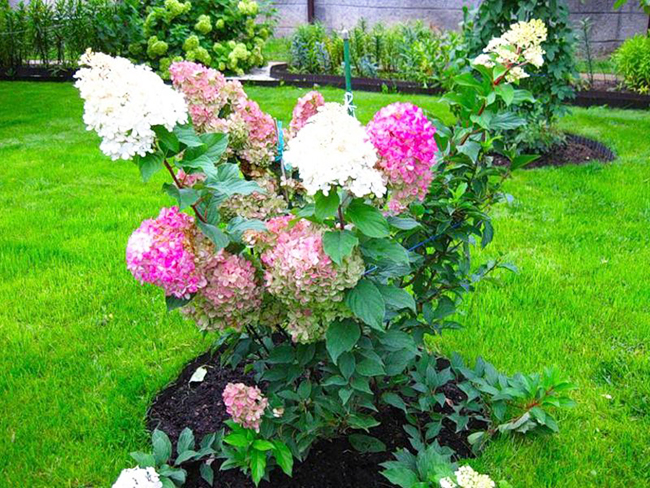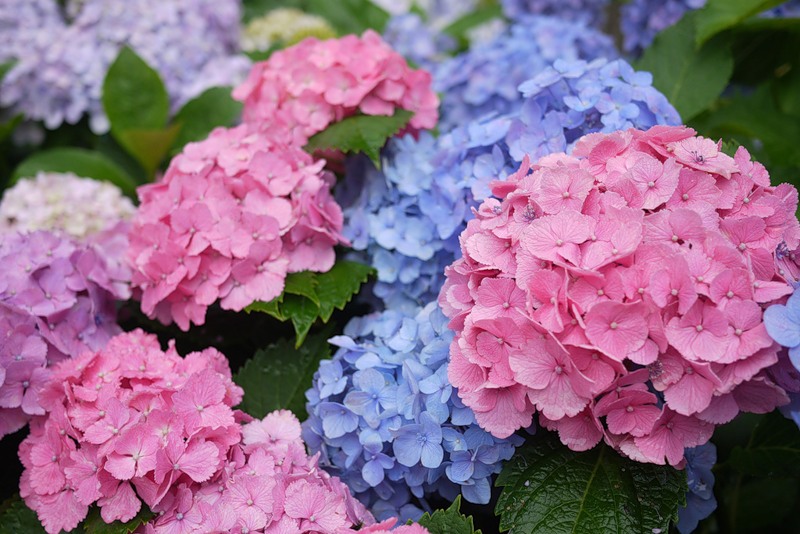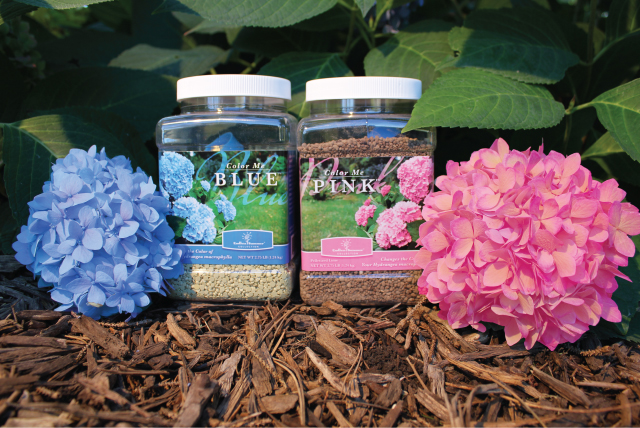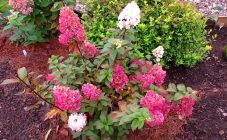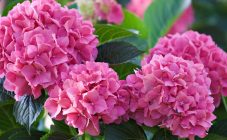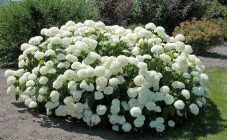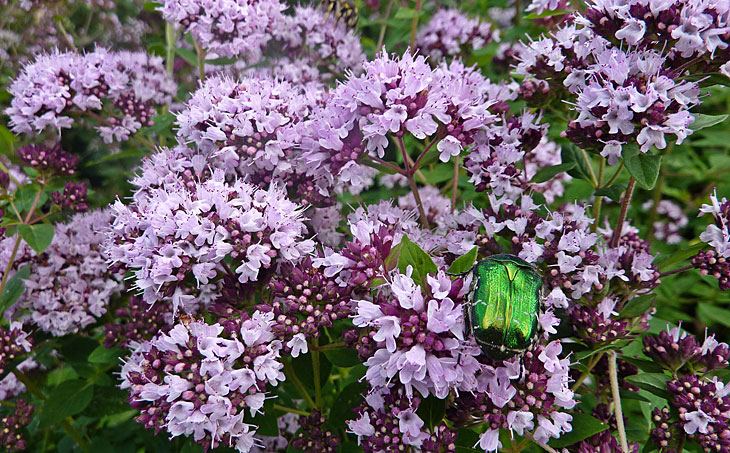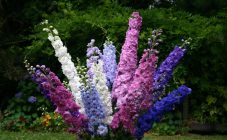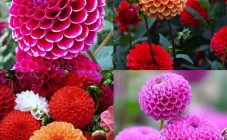Content:
Hydrangea flowers are very beautiful and airy. The plant easily takes root and is unpretentious in care, but when planting in cold regions, certain difficulties may arise. Hydrangea is very susceptible to cold, so in these conditions it is important to create the necessary atmosphere for the plant to feel comfortable. Hydrangea is often found in the Urals, the cultivation of which is realistic, subject to simple rules.
Features of agricultural technology in the Urals
If you are going to grow a hydrangea on your site, you should provide it with all the necessary conditions for growth. Shrubs prefer to grow in partial shade. Fences or other structures in the garden can act as sun protection.
Soil requirements
For the growth and flowering of hydrangeas, it is important that the soil contains a large percentage of peat. If the soil depletes over time, then black soil is poured into the ground. If the soil is poor, then peat or black soil is poured into each hole during planting.
Humidity and watering
For the plant to bloom and look beautiful, it is important to organize sufficient watering throughout the season. If you ignore this moment in hot weather, then there is a high probability that the roots of the plant will simply freeze out. The first days after planting, the bushes are watered every laziness, as the plant takes root, watering is reduced and is performed as the soil dries out.
Landing in open ground
In order for the plant to take root and delight the owners, it is important to comply with certain conditions when planting. You can plant a shrub in both spring and autumn. But it is preferable in the Urals to plant hydrangeas in the open ground in spring.
Initially, the soil is prepared. When planting, the rules of agricultural technology of this culture must be observed:
- The hole is dug at a depth of at least 30 cm, the distance between the bushes is about 1 m.
- To fertilize the soil, about 5 cm of peat is poured into each hole.
- Before placing the seedlings, the roots are shortened by 2 cm.
- After placing the sprout, it is not recommended to deepen the root collar.
- In the spring, sprouts, 1 year old, are shortened by 3 buds.
- After planting, the plant is thoroughly watered and the root zone is covered with a layer of peat. This will keep the base of the plant warm.
Top dressing
After winter, the bushes are fed. In the first year, peat is poured into the soil, and a little later they are fed with nitrogen-containing compounds. To enhance flowering, fertilize is applied twice a month.
At the beginning of the formation of flowers, you can use urea, superphosphate, sulfuric potassium. After the buds appear, superphosphate or potassium sulfate should be added under the root.
At the end of the summer period, 10 liters of humus or compost are introduced into the soil under each bush.
How hydrangea reproduces
The correct choice of a garden hydrangea variety for growing in the Urals does not guarantee that the flower will grow and delight its owners. It is important to properly care for shrubs. If you carry out timely pruning of bushes, water the soil, feed the hydrangea, then a beautiful abundant flowering can be obtained in 4 years.
Bushes can be planted with seedlings or propagated in other ways. Breeding hydrangeas at home is possible:
- seeds;
- layering;
- saplings.
Layers
Layers should begin to form in early spring. Soil is dug up near the plant, and radical paths are made, up to 2 cm deep. One sprout is laid out in each path, pinched with pieces of cut wire. From above, the sprouts are covered with earth.
Cuttings
Reproduction by cuttings begins in early spring. It is at this time that the sprouts are separated from the mother bush and planted in separate beds or in pots. Before the onset of cold weather, the plants are placed in the basement. After winter, in the spring, the pots are again brought out to the heat. Green branches are removed from new shoots, the resulting skeleton with roots is planted in a permanent place. The branches should be positioned to resemble a fan. Young hydrangea bushes must be mulched before winter so that the plant can survive the winter on its own.
Seeds
Growing by seeds is a more laborious process. They are planted in separate pots in early March and covered with foil or glass. Until the moment of germination, the temperature is maintained at about +22. In this case, the ground should be moist, and there should always be light in the room. Shoots will appear in 35-40 days. For two weeks they are not touched, and then they are taken out into the fresh air, constantly increasing the time spent. When the growth of a small hydrangea reaches 10 cm, it can be planted in a permanent place.
How to choose a hydrangea variety
To grow hydrangeas in the difficult climatic conditions of the Urals, it is important to choose the right plant variety. In total, about 300 species of this shrub are read, but not every one of them will be able to grow. The most resistant species are:
- Stalked hydrangea;
- The variety is pink;
- Large-leaved species;
- Sargent;
- Serrated bluebird.
Some of them are still better grown in the softer regions of Russia. It is preferable to cultivate in the Urals hydrangea tree, paniculate or Sargent. The traditional garden hydrangea is less resistant to frost, planting and care in the open field in the Urals will be a little more difficult. It is very important to carefully cover it and protect it from the winter cold.
Preparing for winter
To preserve your hydrangea for next season, it is important to prepare it properly. This stage consists of the following procedures:
- Mulching the soil by mixing compost or humus into it.
- The lower branches are bent to the ground, the young branches are pinned.
- To preserve the plant, you should organize a shelter for it. The trunk is sprinkled with fallen leaves, the branches are bent down, and a shelter is located on top (you can use a wooden box or agrofibre).
- From above, the shelter is covered with the legs of coniferous trees.
It is worth opening the shelter only after the spring frosts have passed.
Flowering features
In order for an adult plant to please with beautiful inflorescences every year, it is important to carry out the constant formation of the bush. Pruning is done regularly. Sanitary pruning is carried out in the spring. In this case, 6-10 of the strongest branches are left, which are shortened by 2-3 buds. If you leave only two buds in the lower part, then the result will not be very many flowers, but they will turn out to be large.
In the absence of regular pruning, the plant will very quickly take on a neglected look, the flowers will first become shallow, and then disappear altogether.
As you can see, even such a heat-loving plant as hydrangea can be grown in the Urals. To obtain a beautiful shrub with an abundance of flowers, you should properly care for the bush. The result will be a beautiful, well-groomed bush that will delight you for a long time.
